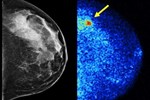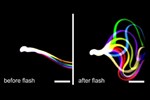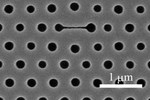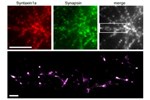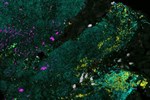-
New Imaging Tech Nearly Quadruples Breast Cancer Detection In Dense Tissue1/28/2015
Mayo Clinic researchers have developed a new method that nearly quadruples the detection rates of invasive breast cancers in dense breast tissue. The technique is called molecular breast imaging, and it could supplement existing mammograms with only minimal increases in radiation exposure.
-
Immobile Sperm Cells Swim Again Thanks To Light1/22/2015
For the first time, the function of sperm has been controlled by optogenetic processes. By inserting a light-activated enzyme into mouse sperm, researchers from the Max Planck Society turned previously sterile mice into fertile ones. This work illustrates how optogenetics can be used outside the area of neuronal cell research.
-
New Laser Could Significantly Improve Biomedical Imaging1/22/2015
Yale researchers have developed a new semiconductor laser that could advance imaging quality across a broad range of applications. Designed around chaotic cavity laser activity, the device eliminates image corruption. It provides the brightness of traditional lasers and the low image corruption of light-emitting diodes, which could enable next-generation microscopes, photolithography, and biomedical imaging.
-
Nanolaser Biosensor Performs Low-Cost, Label-Free DNA Detection1/16/2015
A straightforward imaging method that eliminates the need for fluorescent labels may soon be available. The new approach developed by Yokohama University researchers could be used to detect DNA or proteins related to cancer by measuring changes in the laser’s wavelength and gauging its intensity when molecules are adsorbed in the system.
-
“Nanoscopic” Imaging Technique Captures Neurotransmission On Camera1/15/2015
A new breakthrough from Heriot-Watt University may provide significant insight into neurodegenerative diseases like schizophrenia and epilepsy. A new imaging technique has enabled researchers to capture the exact point and time that information is transferred during neurotransmission. Their research is focused on understanding synaptic events, which are often implicated in neurodegenerative diseases.
-
Solar-Powered “Diagnostics-In-A-Suitcase” Developed For Ebola Testing1/14/2015
To deal with extreme field conditions, researchers have developed a self-contained diagnostics laboratory in a suitcase. Designed to perform Ebola testing, the diagnostic platform uses solar power and room temperature reactions to provide results in as little as 15 minutes.
-
Laser-Activated Nanoparticles Deliver Proteins Inside Cancer Cells1/11/2015
Using surface tags specific to prostate cancer cells, researchers were able to shepherd protein-loaded gold nanoparticles into the cancer cells. Once inside the cells, the protein-laden nanoparticles were induced to release their cargo with laser pulses aimed at single cells. The method is as specific as intra-cellular microinjection and enables spatial and temporal control of protein release at the single-cell level.
-
Glowing Nanoparticles Guide Surgery And Eradicate Remaining Cancer Cells1/8/2015
Ensuring that an entire tumor has been removed is a major goal of cancer surgery and one that has been advanced by Oregon State University (OSU) researchers. By using nanoparticles that selectively impregnate tumors, surgeons can fluoresce the malignant tissue, delineating exactly where to cut. If small tumor portions remain, those same nanoparticles — in conjunction with phototherapy — can kill the remaining cancerous cells.
-
New Bioimaging Technique Diffuses Light Inside Living Tissue1/8/2015
Researchers at Washington University in St. Louis have found a way to focus light deep inside tissues, a technology that may enable real-time optogenetic studies. Using a time-reversed ultrasonic encoding method, the non-invasive technique is the first to diffuse light inside a scattering medium that contains living tissue.
-
Novel Imaging Technique Could Provide Better Diagnostics For Colon Cancer1/5/2015
Illness has often been tied to bacterial disturbances in the human body. Recently, a new bacterial imaging technique has been applied by Johns Hopkins researchers in the study of colon cancer. The researchers discovered a correlation between colon cancer and the presence of dense clumps of bacteria in the ascending colon.


